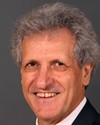Thank you, Mr. Chairman and members of the committee.
My name is Michael McSweeney. I'm with the Cement Association of Canada.
l'd like to thank you for having us here today to provide a little bit of input on how to relate cement and concrete to your study on high-speed rail in Canada.
In terms of a brief overview, which you've been provided with, I'll begin by introducing the cement industry and what we believe is our role in the economic stimulus plan. Then I'll touch on the sustainable properties of cement and concrete and discuss the importance of both life-cycle analysis and total cost of ownership concepts as important planning tools for high-speed rail in Canada.
The Cement Association represents the cement industry right across Canada. Our members include eight cement companies, with manufacturing facilities in five provinces. They are Lafarge North America, Holcim (Canada), Essroc Italcementi, Federal White, Ciment Québec, CalPortland, St. Marys Cement, and Lehigh Hanson Canada. These are among the world's largest multinational cement companies, all operating here in Canada.
In addition to making up over 98% of the Canadian cement manufacturing industries, our members are totally vertically integrated with concrete, aggregate, and construction companies across the country.
In case you didn't know--and I always raise this because I was once with a provincial minister of the environment who asked me what the difference was between cement and concrete--cement is a fine grey powder that, when mixed with gravel, sand, and water, makes concrete. Cement is an intermediary product in the manufacture of the most commonly used and sustainable construction material in Canada, across the world, actually--concrete.
Concrete is second only to water as the building product most used around the world. Concrete is indeed the foundation of our infrastructure. When you look around, you start to notice that everything in our society is built on concrete. Every time you go to the washroom and flush the toilet or wash your hands, it's a concrete pipe that ultimately takes away the waste water. This building is manufactured with concrete. Roads, sidewalks, and runways at airports are made with concrete.
With an understanding of the makeup of our industry and the significance of concrete to construction, it's clear that our industry is a necessary and central part in the government's effort to renew the infrastructure across Canada. In fact, the federal government's economic stimulus plan, in its commitment to make historic investments in Canada's infrastructure, is indeed a once-in-a-lifetime opportunity to spend historically large amounts of money, but spend them wisely.
Before us now is the opportunity to build a new foundation of sustainable, safe, energy-efficient infrastructure, including our transportation system, that will contribute to improving Canada's competitive edge. A focus on sustainability will be critical to ensure that we invest our dollars wisely and that these investments will provide Canadians with a lasting and durable infrastructure program.
Additionally--and I know it's not in the purview of this committee--cement and concrete can play an active role in reducing greenhouse gas emissions. I know that the Minister of the Environment would be pleased to see other government departments doing their fair share to reduce greenhouse gases across the country. If I might add to my colleague Jim's comments, while the airline industry produces only 3% of the greenhouse gases, it produces them way up there where they are transferred all around the world.
Our industry has a central role in the construction of sustainable infrastructure, an infrastructure that should be built to last. With a track record that is literally thousands of years old, cement used in the construction of the ancient pyramids has many eco-friendly attributes. It's durable, resource and energy efficient, and produced locally; it minimizes the urban heat island effect; and it has a low carbon footprint. Concrete offers innovative construction solutions and architectural possibilities.
From coast to coast, think of Canada's major concrete projects: the Confederation Bridge that links P.E.I. to New Brunswick; the architectural magnificence of the Museum of Civilization across the river in Gatineau; and the Dockside Green housing development in Victoria, which has recently been recognized by the Clinton Foundation's global climate initiative as one of the world's model projects for sustainable urban growth. Before construction began, a lead-contaminated area was remediated with cement-based solidification and stabilization. Concrete is the cornerstone of that development.
Let me assure you, though, that concrete also offers innovative solutions to high-speed rail, which we're here to talk about today. Our members have the ability to bring their multinational experiences to the construction of high-speed rail systems from around the world right here in Canada.
There is a global momentum gaining speed around the construction technology called concrete slab track, which is specifically designed for high-speed rail use. It is essentially the concrete highway of railway. Just as highways are built with concrete--they last longer, they're safer, they require 22% less lighting, they're economical--so too should our rail systems be built with concrete.
Concrete slab track is ideal for high-speed rail as well as heavy freight traffic and other railway loads. In fact, concrete slab track is on the horizon to replace traditional track structure of ties and ballasts, which at this point is a centuries-old building practice. Experience and extensive testing by governments and industry around the world have demonstrated that concrete slab track provides many advantages for the high-speed rail system.
Of many advantages, let me highlight just a few. First, with a concrete slab track, derailments are less frequent, as track alignment and grade are better maintained. Second, there's greater stability and better electrical insulation. Finally, there are lower maintenance costs, and as I'm certain you can appreciate, less frequent maintenance means less interruption of service.
As an example of movement towards concrete slab track, following the hard lessons from the high-cost maintenance of the bullet train, the Japanese Railway Technical Research Institute has spent over 30 years researching concrete slab railway track. Now, all new high-speed rail lines in Japan are built on concrete slab track systems.
As Europe is moving towards integrating its national railway system, both the German and French governments are considering concrete slab track for their own high-speed rail use. Concrete slab track has also been used for portions of the Long Island Rail Road and the Eurotunnel, and even by the CPR here in Canada, near Rogers Pass, in British Columbia.
International research has shown that while there's an approximate 30% upfront premium cost for concrete slab track, this premium typically has yielded a payback of between five and twelve years. These kinds of upfront costs highlight the need to include life-cycle cost analysis and take a total-cost-of-ownership perspective when evaluating the costs of construction, constructability, maintenance, and operation of a high-speed rail system.
The model should never be, when you spend taxpayers' money, that the lowest-cost tender wins. That's just wrong. The model should be to built it once, and build it right. Life-cycle assessments and the total-cost-of-ownership concept are an integral part of a cost-benefit analysis, both economically and environmentally.
To conclude, let me say that my colleagues and I have watched your proceedings very closely and with great interest, and we were pleased to learn that Transport Canada, along with the Governments of Ontario and Quebec, are updating a feasibility study on high-speed rail in Canada. However, in order to ensure that Canadians receive the maximum value and benefit for long-term infrastructure investments, we must ensure that we look beyond the initial cost. We must not take the short-term view. We must take the long-term view and support the choice of a more durable, sustainable infrastructure solution like the one concrete can provide.
That's my soapbox, Mr. Chairman and committee members. It has been a pleasure to be here today. Whenever you're ready, I'm able to answer some of your questions, hopefully.
Thank you.










